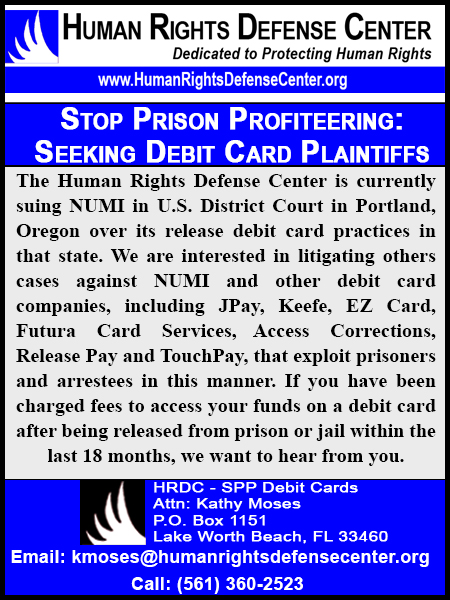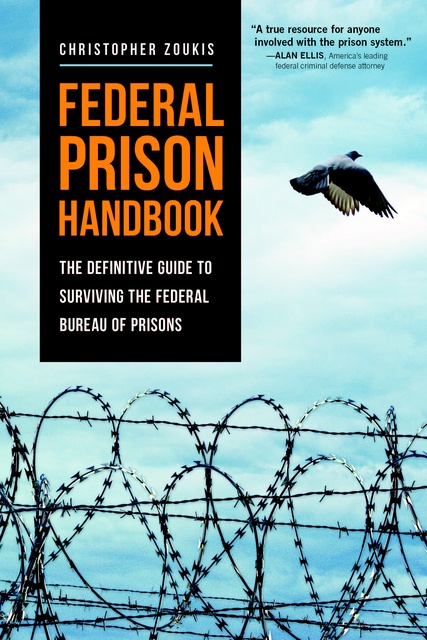From the Editor Everything You Always Wanted to Know About Holdings and Dicta*
*But Were Afraid to Ask
by Richard Resch
As Andrew v. White, 220 L. Ed. 2d 340 (2025) (per curiam), illustrates, even highly accomplished legal professionals at the pinnacle of the profession can find themselves grappling with the subtle art of correctly identifying the holding(s) in court opinions. Notice how SCOTUS declares that the Tenth Circuit was mistaken about the holding in Payne v. Tennessee, 501 U.S. 808 (1991). But in dissent, Justices Thomas and Gorsuch argue that it is the majority who misinterpret Payne’s holding, not the Tenth Circuit.
Difficulty Identifying a Court’s Holding
It may come as a surprise to some readers that there can be such disagreement and confusion over what constitutes the holding in a court opinion. But it is true. The landmark case Planned Parenthood v. Casey, 505 U.S. 833 (1992), is a prominent example of this phenomenon. Ask three different legal scholars who have studied the case what the Court held, and you could receive four different answers. Reasonable minds sometimes disagree about what a court actually held.
A court’s “holding” is the rule of law that the court explicitly establishes as necessary to resolve the case before it. It is the answer to the specific legal question or questions presented, tied directly to the facts of the case. If the facts were changed, the holding may no longer apply, which is why holdings are typically narrow and fact-specific. The reason it is important to identify the precise holding of an opinion is because the holding is binding precedent that lower courts must follow.
Why is it often difficult to identify a court’s holding? There are numerous reasons for the difficulty. Some of the primary ones are as follows:
Complexity—court opinions are typically complex and layered with multiple issues being addressed, some of which may be tangential, so this complexity can obscure which portions of the opinion constitute holdings as opposed to dicta.
Structure—courts frequently fail to expressly label their holdings as such, which results in readers having to parse dense language—that all too often is poorly organized and written—to determine the court’s intent.
Reasoning—the line separating holding and dicta can be blurry because courts frequently weave together extensive legal analysis, hypotheticals, and commentary in an effort to provide comprehensive reasoning for their decision, but that can shroud the actual holding in uncertainty and leave readers to discern what is essential to the decision versus what is merely illustrative, commentary, or advisory.
Identifying the holding of a court opinion is far more complex than simply summarizing the opinion or identifying the court’s various conclusions or pronouncements in it. Consequently, many of you—like me—have undoubtedly misused the term “holding” or confused it with “dicta” when discussing case law at some point. There is no shame in that; Andrew teaches us that even eminent jurists on the highest courts in the country can get it wrong (or strongly disagree among themselves). Let’s discuss how to distinguish between holdings and dicta so that you are able to get it right more often than not.
Let’s Talk About Dicta
“Dicta” are statements, observations, commentaries, or hypotheticals of the court that are not essential to the decision. Dicta can be persuasive, informative, and interesting—as well as confusing and unhelpful—but do not constitute binding precedent. Unfortunately, it is often difficult to distinguish between a court’s actual holding and mere dicta.
You are almost certainly familiar with one of the most infamous and misunderstood instances of dictum—the singular form of dicta—that has ever appeared in a SCOTUS opinion, viz., it’s illegal to shout fire in a crowded theater (in fact, it is not categorically unprotected speech, i.e., illegal, despite the widespread belief to the contrary), which is based on Justice Holmes’ line in Schenck v. United States, 249 U.S. 47, 52 (1919), that “The most stringent protection of free speech would not protect a man in falsely shouting fire in a theatre and causing panic.”
Schenck involved the Espionage Act of 1917 and whether the distribution of leaflets opposing the draft during World War I constituted protected speech. Schenck held that speech that creates a “clear and present danger” can be restricted (though, that test has been replaced by the “imminent lawless action” test set forth in Brandenburg v. Ohio, 395 U.S. 444 (1969)) and upheld Schenck’s conviction because his speech in question was not protected by the First Amendment under the clear and present danger test.
Justice Holmes used the “fire in a crowded theater” line simply as an analogy to illustrate the concept of “clear and present danger.” It was a hypothetical example that was completely unnecessary to answer the legal question posed and to resolve the case because the Court would have ruled the same way even without the analogy. Thus, the troublesome “you can’t shout fire in a crowded theater” line is mere dictum, yet in Rasputin-like fashion, it defies all judicial attempts to kill it and continues to live on against all odds to confound the general public and U.S. Supreme Court Justices alike (we’re looking your way Justice Alito).
How to Identify Holdings
Turning our focus back to holdings, here is a helpful three-step process for identifying them. First, identify the precise legal question the court must answer. You must know what the core dispute is in order to identify the holding. Next, search for the actual legal rule the court articulated in answering the legal question. This emphasizes that the holding is a rule of law, not merely a general statement or commentary, i.e., dictum. Finally, ensure that the legal rule is directly applied to the facts of the case and required for its resolution. This stresses the importance of the legal rule being directly applied to the specific facts of the case and its necessity for the court’s decision.
Most readers of CLN are familiar with the seminal case Strickland v. Washington, 466 U.S. 668 (1984), which set forth the two-part test for evaluating ineffective assistance of counsel claims under the Sixth Amendment, so we will apply the three-step process to that familiar case.
Step 1—Identify the precise legal question the court must answer. The precise legal question in Strickland was which standard should courts use to determine whether a criminal defendant received ineffective assistance of counsel for purposes of the Sixth Amendment. The question arose because David Washington argued that his trial counsel’s performance was so deficient that it deprived him of his constitutional right to a fair trial.
Step 2—Search for the actual legal rule the court articulated in answering the legal question. In answering the legal question posed, the Strickland Court established the now famous two-part test for evaluating ineffective assistance of counsel claims: (1) Performance Prong—the defendant must show that counsel’s performance was deficient because it fell below an objective standard of reasonableness under prevailing professional norms and (2) Prejudice Prong—the defendant must establish that counsel’s deficient performance prejudiced the defense, i.e., there is a reasonable probability that, but for counsel’s errors, the result of the proceeding would have been different.
Step 3—Ensure that the legal rule is directly applied to the facts of the case and required for its resolution. The Strickland Court applied its newly announced two-part test to the facts of Washington’s case and concluded that his lawyer’s performance was arguably deficient in some respects, but those errors did not prejudice the outcome of the trial—that is, he failed to satisfy the second prong of the test. Notice that the two-part test was necessary to answer the legal question posed by applying it to the specific facts of the case.
Thus, the primary holding of Strickland is as follows: In order to establish a valid claim of ineffective assistance of counsel under the Sixth Amendment, a defendant must show (1) that counsel’s performance was deficient by falling below an objective standard of reasonableness and (2) that the deficient performance prejudiced the defense, resulting in a reasonable probability that, but for counsel’s errors, the outcome of the proceeding would have been different.
Consequences of Misidentifying Holdings and Dicta
Many long-time readers of CLN are pro se litigants, so understanding the potential negative consequences of misidentifying courts’ holdings and dicta is essential to successfully litigating your case. Misidentifying holdings and dicta result in a wide range of negative consequences, including the following:
Misguided Legal Strategies—mistaking dicta for holdings can result in pursuing invalid legal strategies, and conversely, confusing holdings for dicta can result in failing to pursue meritorious claims.
Weakened Legal Arguments—confusing dicta for holdings can undermine the strength of your arguments and ultimately case. Opposing counsel and the court will undoubtedly notice the attempt to characterize persuasive dicta as binding precedent and treat your arguments accordingly.
Diminished Credibility—consistently mixing up holdings and dicta often leads to judicial frustration with pro se litigants’ misunderstanding of basic legal principles, which can result in the loss of credibility with judges and them being less receptive to pro se litigants’ arguments. This can also erode judicial patience and result in greater scrutiny of filings and less willingness to overlook minor procedural errors.
Procedural Errors and Missed Deadlines—failing to correctly distinguish between holdings and dicta can result in misunderstanding critical procedural requirements, which can lead to missed filing deadlines, not understanding exhaustion requirements, failure to frame claims properly, etc.
Emotional and Psychological Toll—the inability to accurately distinguish between holdings and dicta can result in false hope and a deep but unwarranted sense of injustice when pro se litigants falsely believe that they have been denied their rights based on a fundamental misunderstanding of the relevant case law. These feelings of frustration, helplessness, and disillusionment may discourage pro se litigants from pursuing valid claims.
Vulnerable to Manipulation—lacking the ability to identify holdings and dicta leaves pro se litigants vulnerable to manipulation by other prisoners who claim to have legal expertise but may take advantage of them through the use of misinformation and false promises. Additionally, such pro se litigants can be easily mislead by inaccurate online resources and faulty legal advice from well-meaning but misinformed non-lawyers.
Conclusion
Identifying the precise holding of a court involves a blend of art and science because, while there is a clear formula to follow, what constitutes the holding can still be subject to interpretation, as Andrew illustrates. However, that does not mean that any language in an opinion is subject to interpretation as the actual holding. Opinions contain language that undoubtedly does not constitute the holding. For example, the “you can’t shout fire in a crowded theater” line in Schenck is indisputably dictum, and no reasonable jurist would argue otherwise.
Determining what the precise holding in a court opinion is requires meticulous reading, critical thinking, and extreme attention to detail because even experienced legal professionals can—and do—get it wrong on occasion. Crucially, your ability to spot holdings depends on understanding what a holding actually is.
The good news is if you have read this far, you should now have a solid grasp of what holdings truly are and how to spot them. Like with any new skill, mastery requires consistent practice and dedication, so you should critically read as many appellate court opinions as you can while applying what you have just learned. The next time you discuss case law, you will know that not every statement and determination made by a court constitutes a holding. The ability to consistently distinguish holdings from dicta is not just a trivial technical skill or amusing gimmick—it can literally make the difference between success and failure in litigating your case.
As a digital subscriber to Criminal Legal News, you can access full text and downloads for this and other premium content.
Already a subscriber? Login





